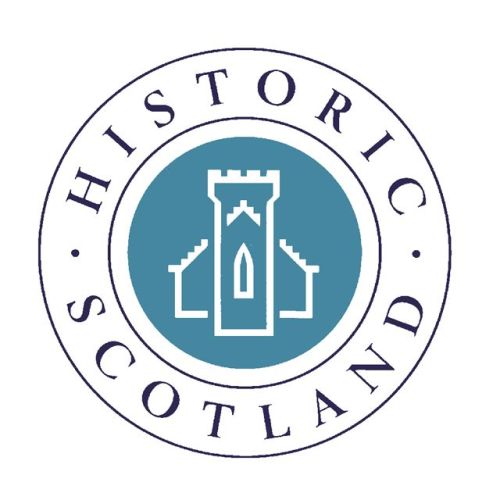
A Cistercian house
Dundrennan Abbey was founded in 1142 by Fergus, Lord of Galloway, with the help of King David I of Scotland. The white-robed Cistercian monks came from Rievaulx Abbey, in North Yorkshire. After establishing the abbey at Dundrennan, monks went forth to found two more Cistercian abbeys in Galloway – Glenluce, near Stranraer, around 1190, and Sweetheart, in the village of New Abbey, south of Dumfries, in 1273. All three are now in the care of Historic Scotland.
For 400 years, the monks worshipped at Dundrennan. However, we know little about them. The names of abbots and other officials are known from grave-markers, charters and other legal documents. A hint of the abbey’s economy comes from papers dealing with the wool trade. But for the most part we have only its physical remains to tell its history
Church and cloister
No one could fail to be charmed by the peaceful beauty of Dundrennan’s ruins. Its church and cloister lie in secluded woods below the little village. Together, they hold some of the best early Gothic architecture in Scotland.
The church is certainly the most impressive one to survive from the 13 Cistercian monasteries set up in Scotland. It is laid out on the usual Cistercian cross plan, but by the time the transepts were being built in the later 12th century, the Cistercians’ legendary austerity was becoming diluted. As a result, the visitor sees an unusual three-storeyed design graced by blind and open arcades. This complements the simple details of the presbytery, notably the ‘bundled-shaft’ piers with their plain, bell-shaped caps.
The cloister, although much ruined, is still largely traceable on the ground. The chapter house in the east range dates from the early 13th century and must have been a chamber of exceptional beauty, judging by what remains. The entrance façade is a delightful composition, and the six finely moulded piers inside once supported a handsome, stone-vaulted ceiling. Grave-slabs of four abbots can still be seen set into the floor, together with a slab of blue marble, once highly polished and mounted with a Flemish brass depicting a knight and lady.
Queen Mary’s last night in Scotland
The abbey‘s most famous visitor was Mary Queen of Scots. On 15 May 1568, she was welcomed at the gates following her escape from Lochleven Castle, near Kinross, and her defeat at Langside, beside Glasgow. Mary was making for England and the comparative safety, so she thought, of her cousin, Elizabeth I of England. On the following morning she boarded a boat bound for the Cumberland coast. She never returned to her native land.
No Comments Yet - Why not be the first to leave a comment
Every effort is made to make sure that all the information is correct but we strongly recommend that you call Dundrennan Abbey before you set off on your day out to confirm opening times and admission prices.
Please also note that the position on Google maps for Dundrennan Abbey is a rough estimate using their postcode in the database and might be slightly out.
It may also be worth clicking the web link for Dundrennan Abbey to see if there are any special events coming up or currently on.